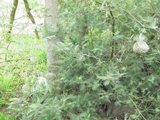PHOWN summaries and recordsVirtual Museum View records in Virtual Museum formatCoverage map for all species Species totals, Nest stats per species and Observer totals Species summary , or General query Observer records, or View VM record Photo of the week, or PHOWN repeats, or PHOWN priorities |
PHOWN record summary
|
Enter new vm record to see a different record and hit 'Go'.
|
Species allocated by Coordinator: Record details entered by participant: (see all records here for this participant) Google map for this record (zoom in and switch to satellite view)
Photos uploaded by observer
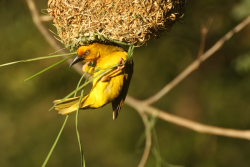
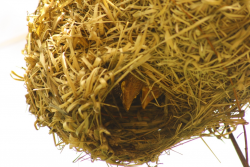
Large photos
799, Cape Weaver Ploceus capensis (see species summary here)Record status ACCEPTED Vm 3288 [on-line data upload (2012-10-13): 23945] Species Ploceus capensis Observer(s) Robbins G Country, town, locus South Africa, Western Cape, Plettenberg Bay,
3423ABLocality 52 Heuwel Street, Wittedrift Latitude, longitude -34.009847, 23.3403 [0 m accuracy] Date 2012/10/12 Notes Monday the 15th October seems to be the day the first chick has left the nest. I have not had any sighting of the mother or the chick.
The Male Parent seems, to be very happy that the nest is unoccupied as he is now building on it again and it looks like he is building a new nest connecting to the nest that previously housed the 1 chick.(seen photo)
The other 2 chicks are doing well and in the photo you will see that the one chick is starting to grow much quicker than the other.
Nest count 12 Nest site tree
To see this map with all other PHOWN records, click here. Note that the map on this page will load very slowly and probably will only work if you use Chrome as a browser.
History of repeat colony counts
Note: repeats from the same day are not shown.vm Species code Date Nests Notes 1582 799 22/11/2011 24 The Cape Weaver in my garden have been nesting since July. They have survived boomslang attacks and 4 days ago a Steppe Buzzard was trying to get into the nest too. These weavers are still building news nests and I am trying to make notes to see how long it takes a nest to be built. I will keep you posted if you like. The last couple of nests have been built on an old nest and I am waiting for one to fall to look inside. There are 3 of these double nests. 1604 799 2/12/2011 21 After the heavy rain ended yesterday afternoon at approximately 16:30pm, the male cape weaver started to take his nest apart (this was the double nest, which I sent to you previously). He continued until approximately 18:30 until there was merely a strand left to support the nest. This morning at 07:30am he started again and the nest fell down at 7:40am. He does have another nest close to the one that fell down and I think that he will try to build a new nest where he took the old one down. I will keep you updated with the progress. I will also send you a larger pic of the colony, I am still trying to id the tree and it has just started to show it yellow flowers. 1659 799 12/12/2011 19 With referrence to the record I submitted on the 2nd Dec 2011, the specific male weaver that was mentioned, managed to take down the nest and started rebuilding a new nest straight away. Since then he has managed to attract a female cape weaver in to the nest which I saw for the first time yesterday afternoon and has he been constantly chasing her and what it looks like is he is trying to mate with her. The mentioned male Cape weaver is currently building a new nest next to the older one as well.
The photo labelled "new" is of the mentioned male cape weaver building his new nest and the nest in the bottom right is the one that he started building on the 2 Dec 2011 and his female is inside that nest.
The host tree is a Wild Laburnum "Calpurnia aurea" which is an indigenous tree in the eastern cape, not here.
The weavers are lining the nests with the smooth soft leaf of the False Olive "Buddlea saligna"
The weavers are also stripping leaves of what looks like a Lala Palm that is in the garden as well.
The colony is right next to my balcony and I am approximately 1.5m from the closest weaver nest and they do not see me as a threat. 2597 799 20/7/2012 5 This is the first data upload of my weaver colony in Wittedrift for the season.
Something I have not noticed before is that the male Weaver strips the branch clean of other leaves where its nest has been built.
There are 3 male Weavers currently building at the moment. 2616 799 31/7/2012 8 The first interested female arrived yesterday morning (30th July). As soon as the female weaver tried to get close to one of males nests nests,the other males would chase her away.
Only one nest has been destroyed in the last week.
The males are lining the insides of the nests with different materials such as the soft leaves of the False Olive Buddleja saligna and I am still trying to identify the second bush/tree leaves that are also used.
2680 799 8/8/2012 10 The weavers have been quite busy despite the 40mls of rain we have received this week.
There is no sign of any females in the nests yet.
One male weaver is starting to build another nest right on top of the other(same as last year) this nest is half built and is not included in this count.
They have started to strip the leaves from the Palm tree in the garden and collect long blades of grass from the school field below.
2695 799 9/8/2012 11 On the afternoon of the 9th August I watched the first female Cape Weaver enter one of the males nests.
The Male has completed the double nest as well.
2731 799 17/8/2012 11 There are currently 11 nests and one half built nest which I have not included in this count. One nest has been completely taken down.
2757 799 22/8/2012 11 The male weavers have destroyed one more nest.
The double nest has now grown to a triple nest. The Male weaver seems to be using the older nests as support for the new nest to be built.
There are no more signs of any female weavers being present inside the nests.
2805 799 30/8/2012 13 This has been a busy week for the Wittedrift Weaver Colony. The nest count has shot up to 13 nests, which means the male weavers are quickly replacing the destroyed nests.
There has been a lot more female activity, and the male weavers go completely mad and hang upside down from the nests,chase one another and try their best to lure the females into their nests.
So far only one female has been inside the nest, but she does not stay in there for long periods of time. 2833 799 5/9/2012 14 With one female cape weaver having accepted one of the nests, she has been pursued no-stop by the male weaver who's nest she has chosen. I have attached a few pics of him mating with her ( 30 August 2012) and his attempts too!
I have put red dots on the nests to make it easier to identify the nests.
2871 799 12/9/2012 14 The first female that has arrived looks very comfortable in her new home and I will be interested to see if she will lay or has laid already.
What would the signs be?
How long is their gestation period?
There has been a second female to arrived, but there has been no activity yet apart from her inspecting the nests.
Another male is starting to build his second nest right next to another and it definitely looks like he is using the older nest for support for the second nest.
I have not included this nest, but by tomorrow it should start to take shape.
2981 799 21/9/2012 14 The 2 nests with the females inside are both built by the same male cape weaver. He is the one featured in the 3rd photo. The other 2 males have yet to have success in the colony regarding attracting female. 3094 799 1/10/2012 15 As you will see the female weaver is very busy feeding. The chick is very vocal and seems to be growing fast.
The second female ( no in any of these photos) is also very attentive to her nest but there is no sound coming from it yet.
There was a African Harrier Hawk in the tree this morning, but it flew off before I could photograph him in the tree.
3158 799 6/10/2012 14 Second clutch of Chicks:
On Tuesday the 2nd of October I noticed the chirping sounds coming from the another nest with chicks.
This nest belongs to the same male who has has the chick in the other nest.
There are 2 chick in this nest
This is a very different feeding pattern as the first nest, as I have noticed both male and female feeding the chicks.
I have recorded the time it takes the female to leave the nest and come back with food to feed the 2 chicks:
3 min 52 sec
1 min 44 sec
1 min 48 seconds
Theses times are all taken right after one another, and this happens all day long.
I presume the pressure of a second chick means that the male has to assist. Even the female weaver comes to the sugar feeder quite often which shows how busy she is.
This is a very different situation to the other chick.
I will send a separate data form for them right after this one.
I have tried to see what the adults are feeding the chicks, but I am struggling to identify the food for now.
3288 799 12/10/2012 12 Monday the 15th October seems to be the day the first chick has left the nest. I have not had any sighting of the mother or the chick.
The Male Parent seems, to be very happy that the nest is unoccupied as he is now building on it again and it looks like he is building a new nest connecting to the nest that previously housed the 1 chick.(seen photo)
The other 2 chicks are doing well and in the photo you will see that the one chick is starting to grow much quicker than the other.
3741 799 6/11/2012 10 Since the last data upload, the other 2 chicks have left the nest and now the male weaver has successfully managed to get 2 more female weavers into his newer nests.
The females are spending a fair amount of time in the nest, but I have not hear any sounds of chicks yet.
The first female to occupy a nest has occupied the bottom nest of a double nest ( IMG 3001) the second female has occupied another nest close by ( IMG 4311)but only a few days after the other female.
This male weaver is the same male mentioned in other data uploads and has seemed to have chased one male of completely.
Therefore the colony started off with 3 male weavers, there is only 2 at present.
The amount of nests has also decreased.
This male weaver has also become very aggressive towards other birds and gave a poor Cape Turtle Dove a beating this afternoon when it came to land in the tree.
3880 799 10/11/2012 10 Female 1 has got chicks and they are very vocal at the moment and the female is very busy feeding at the moment.
Female 2, looks like she is busy incubating the eggs at the moment, and looking very hot in her nest.
The male weaver is still very active and I only see him at the colony.
The rate of nest building is low, and I think the other 2 males have moved off.
I have attached a photo edited in paint so you can see the position of the nests(red) and which ones are occupied by the respective females(yellow)
4246 799 3/12/2012 16 The 2nd male has successfully got his first female for the season. I have attached some photos of them mating as well as a photo of the female in her nest. I first noticed the mating on the 2 December and took these photos on the 3 December 2012 4245 799 5/12/2012 16 The Colony has grown in size since my last update on the Wittedrift Cape Weaver Colony and there has been quite a few interesting occurrences:
First of all there are still 3 males in the colony and eventually one of the males ( 2nd Male ) has successfully mated and attracted a female to one of his nests( See Record 2)
Both females from the previous data upload ( 3880 )have moved out and unfortunately one chick died after falling out of the nest. I am not sure which nest it came from.
Since then I have observed an immature weaver coming to the colony and follow after the male/father. see attached photo.
We also had a boomslang in the garden which caught the attention of the weaver. There were no casualties, but the weaver did try to mob the snake a few times.
4293 799 12/12/2012 16 The colony is very busy with 2 nests with chicks and one female busy incubating the eggs.
5176 799 8/2/2013 11 Away from 15 Dec but that was really close to the end of the season for the Cape Weaver Colony here. When I got back on the 10 Jan, the colony was very quiet, but with a few weavers hanging about. The nests have not changed much since Jan. We have had one fatality by a Cat! So we lost one adult female and her chicks. The nest/female that was the lost was the last female to have chicks for the season. So therefore the last nest with chicks in my submissions. There was one other chick fatality, which fell out of the nest and died.
Otherwise no recorded fatalities and we had regular views of youngsters around the colony, as per one submission I sent. 5968 799 2/7/2013 2 There are 3 males present.
2 males are currently constructing their nests
Old nest have been taken down by the weavers and branches of the tree have been cleared for potential nesting sights.
One male has been stripping the palm tree for nest building material. 
Vm 1582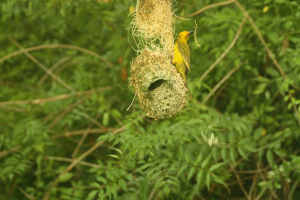
Vm 1604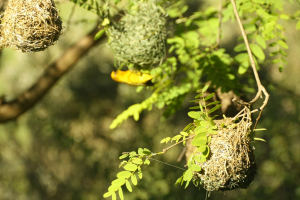
Vm 1659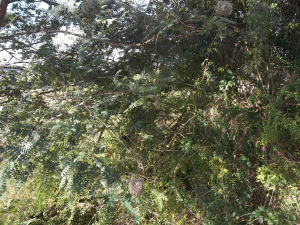
Vm 2597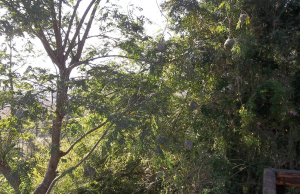
Vm 2616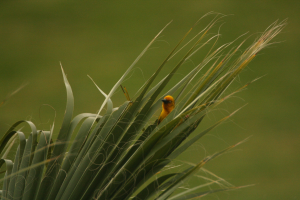
Vm 2680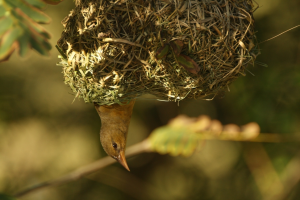
Vm 2695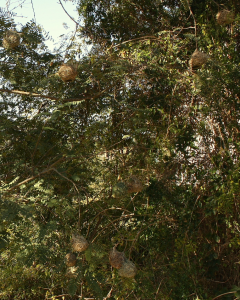
Vm 2731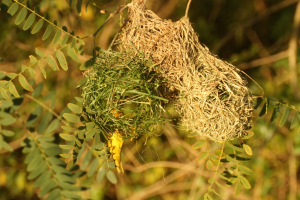
Vm 2757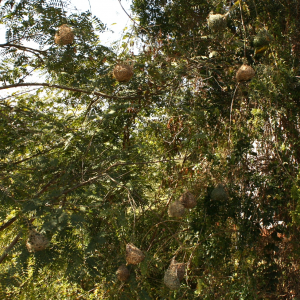
Vm 2805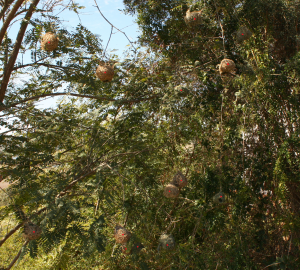
Vm 2833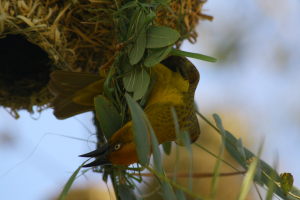
Vm 2871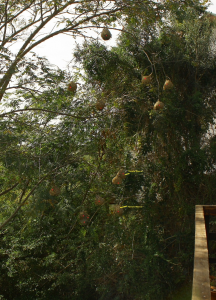
Vm 2981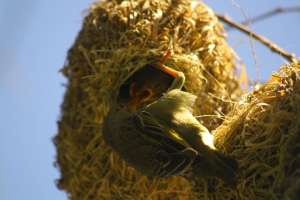
Vm 3094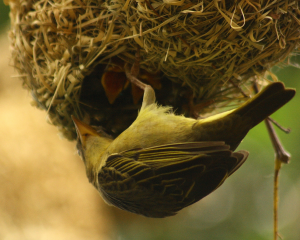
Vm 3158
Vm 3288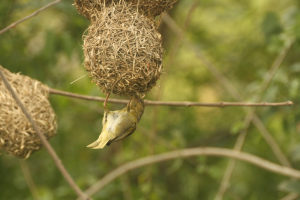
Vm 3741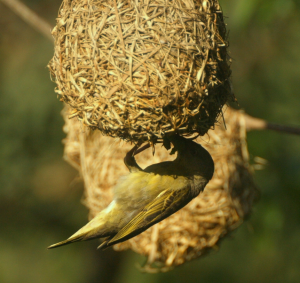
Vm 3880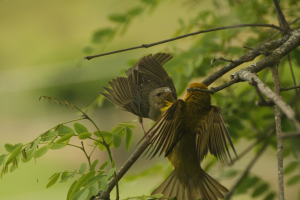
Vm 4246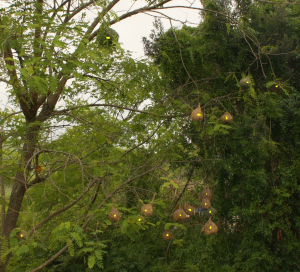
Vm 4245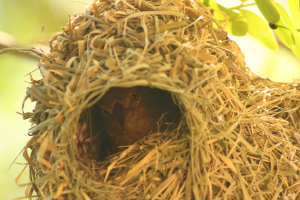
Vm 4293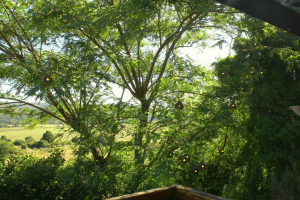
Vm 5176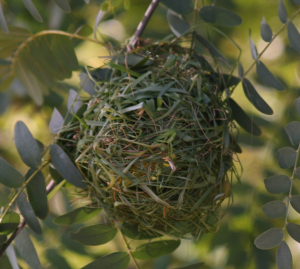
Vm 5968








